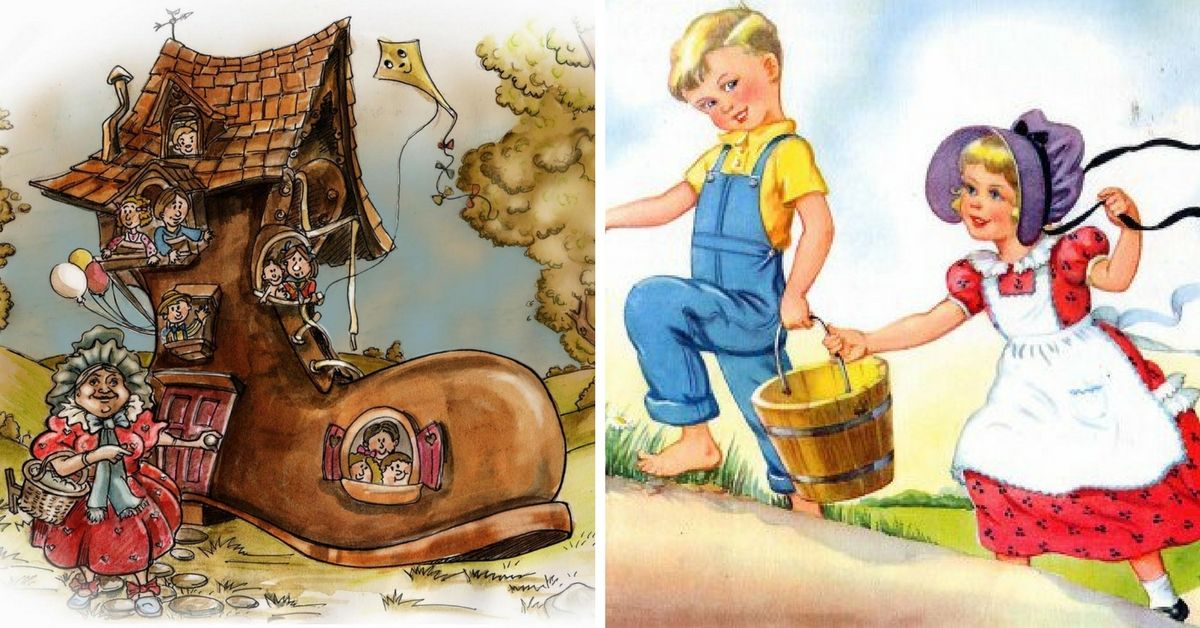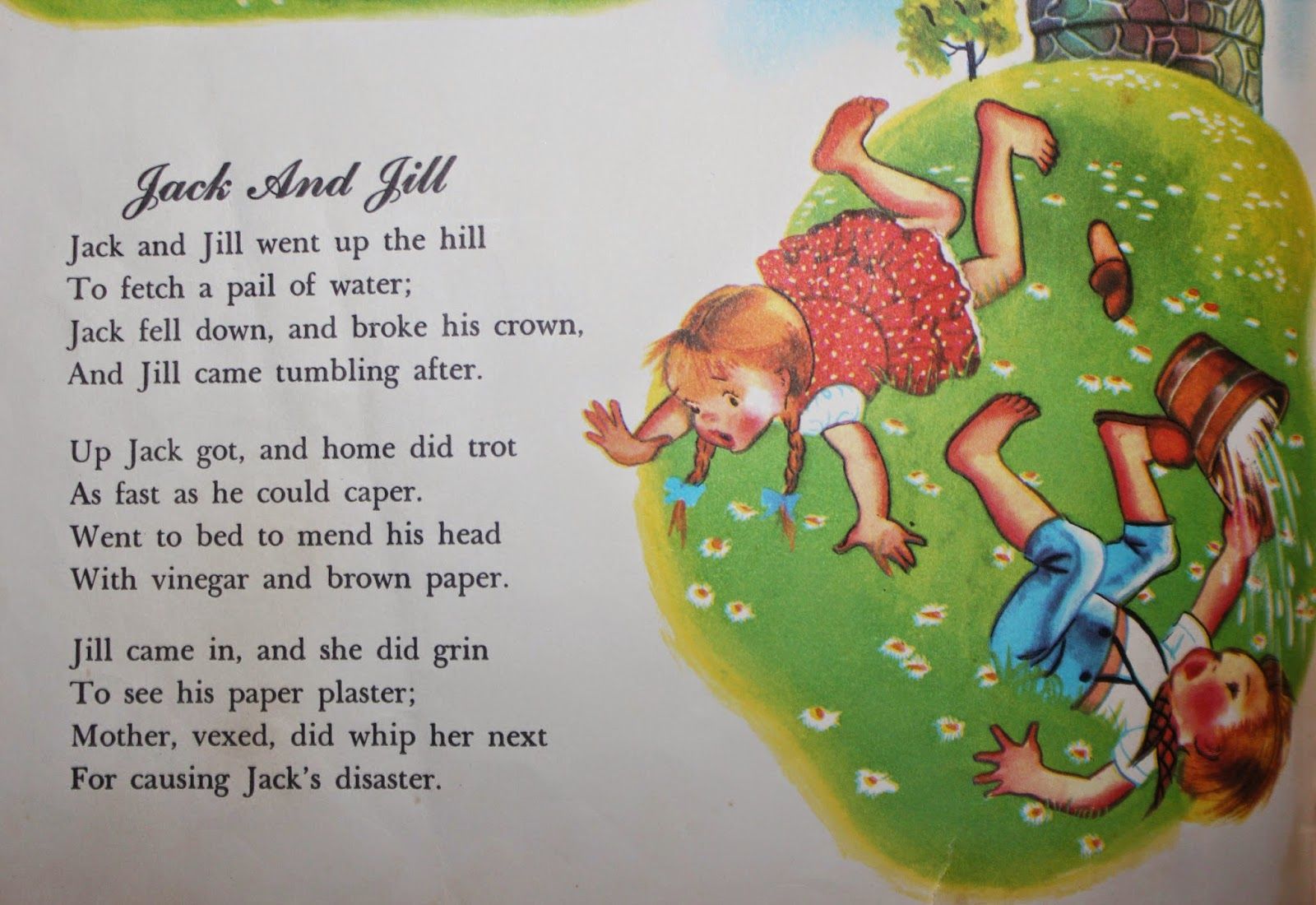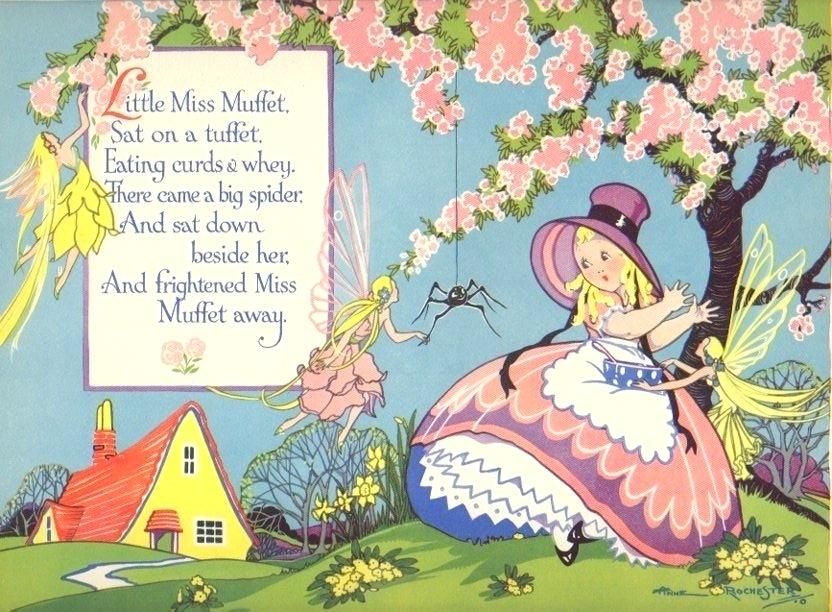When you were a child, it's almost guaranteed your parents read you a nursery rhyme before you went to bed. While the catchy lyrics often stayed in your head, you probably didn't think about what they meant or what kind of morals were intertwined in the jingle.
Personally, it was only when I had my own children that I began to question what I sang to them before they drifted off to sleep. When I eventually found out what they represented, I immediately stopped reciting those iconic poems.
Curious about the true meaning behind your favorite nursery rhymes? Here are 10 of the most heartbreaking backstories that will make you rethink your childhood memories.
1. Jack and Jill
In what appeared to be a harmless story about a brother-sister duo tumbling down a hill actually has three verses, with the last two being relatively unheard of.
Jack and Jill are meant to represent King Louis XVI and his wife, Marie Antoinette. They were convicted of treason during the French Revolution and sentenced to death by beheading.
"Jack" breaking his "crown" reflected Louis losing his head, and Jill "came tumbling after" represented Marie getting executed shortly after.
2. Little Miss Muffet
While a spider is already considered scary for children, it's believed the protagonist is actually based on the daughter of Dr. Thomas Muffet who in the allegedly crushed up spiders before feeding them to his patients.
But don't worry, the doctor didn't do so with cruel intentions. Back in the 16th century it was believed the bug could cure a variety of illnesses and diseases. Luckily, we now know better.
3. There was an Old Woman Who Lived in a Shoe
In what seemed like an innocent tale actually represents more than just a mother who was strict with her several children.
While the idea of a bunch of kids living in a huge shoe may be deemed humorous, what it symbolizes is not. This rhyme represents the hardships of the poor in medieval England. A family of peasants barely had enough food to feed everyone and children were often the punching bags for their struggling parents.
4. Baa Baa Black Sheep
Even though this story depicts a generous sheep offering his wool, in real life it was taken from farmers instead of being handed out as a gift.
It's believed this rhyme dates back to the feudal era where sheep farmers began protest the high tax hike on wool. King Edward I imposed a law where 1/3 of the wool went to the king, 1/3 went to the church. While farmers were allowed to keep the rest, they were left in poverty.
5. Mary Mary Quite Contrary
In what was believed to be a wholesome tale about an avid gardener, it actually represents Queen Mary I's attempt to bring back Catholicism to England. "Bloody" Mary was known to have tortured and murdered Protestants in an effort to squash the Reformation, but passed away after only five years as queen.
The "silver bells" and "cockleshells" were actually instruments of torture, while the "pretty maids all in a row" is in reference to the thousands of Protestants burnt at the stake.
6. Ten Little Indians
An obviously offensive nursery rhyme in the modern era, Ten Little Indians was written to depict the systematic murders of Indigenous people in the 18th century. Things were even worse when the poem was created, as the word Indians was originally spelled "Injun" instead.
This rhyme inspired mystery writer Agatha Christie to write her novel, And Then There Were None. However, she wasn't PC either, as she previously titled her book Ten Little N***** before publishers made the decision to change the name.
7. Goosey Goosey Gander
Although this rhyme is grim enough by pushing an old man down the stairs, the backstory is even worse. As with Mary Mary Quite Contrary, this poem also represents religious prosecution, but this time through the prospective of those who were targeted.
Since Protestantism was at one point the only religion allowed (and forced) to be followed, Catholic priests frequently said their prayers while hidden in secret rooms belonging to Catholic nobles. If they were following their religious beliefs, they would be "thrown down the stairs," otherwise known as being executed.
8. Three Blind Mice
If you thought these three mice had it rough, you haven't heard what it symbolizes. Another rhyme about Bloody Mary, the mice are believed to represent Protestant bishops Hugh Latimer, Nicholas Ridley and Thomas Cranmer, the Archbishop of Canterbury.
They conspired to overthrow Mary by attempting to put a Protestant leader on the throne, but were eventually caught, tortured, blinded before being burned at the stake for treason and heresy.
9. Lucy Locket
While it may seem like Lucy Locket is about a lady who was robbed by of her cash, in reality these Lucy Locket and Kitty Fisher had a lot more to fight over.
During the reign of Charles I, the pair were prominent prostitutes who were in a love triangle with the same man. Not only did Kitty come out victorious, she also transformed her life of humble beginnings into one surrounded by "splendor and servants."
10. Here We Go Round The Mulberry Bush
While this may seem like an innocent tale about a group of children having fun during a cold, frosty morning, it actually represents a much sadder tale. The children depicted in the poem were actually female prisoners who would be forced to run around mulberry bushes for daily exercise. Since they were incarcerated, jailers would beat the women if they didn't believe they were exercising hard enough.
If you were baffled about this article about nursery rhymes, you'll definitely be comforted by these sweet poems:
- "A Nurse's Prayer:" A Heartwarming Poem Someone Who Knows A Nurse Will Understand
- "Letter From A Mother To A Daughter"-- A Poem From A Mother With Alzheimer's
- A Poem For My Mom Who Has Passed
[H/T: Daily Mirror, Grunge, Huffington Post, Vagabomb]


